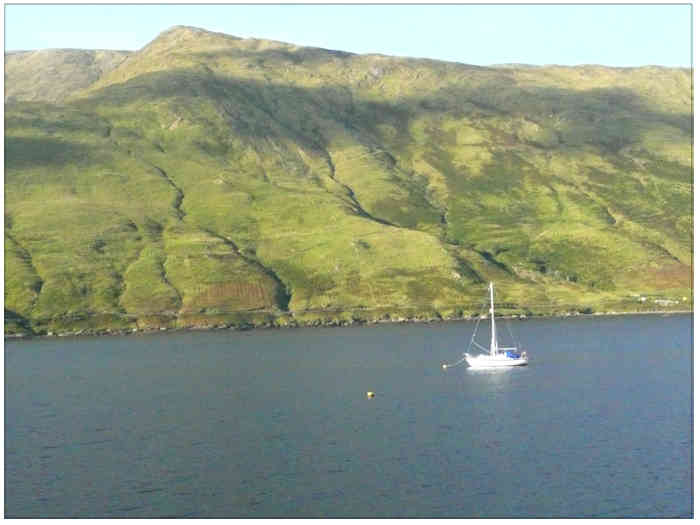Do You Actually Decide
What to Paint?
If you are like I was in my beginning years, you may not consciously decide what to paint and what to leave out. You may work a lot from photographs and just copy what you see.
The big trouble with that is that most photographs are not well designed. And even when they are, just copying what you see in them doesn't guarantee good art.
If art were that simple, everyone would be a great artist or photographer.
I witnessed proof of this truth many years ago when I stopped in to see an old friend on my way to visit my parents.
Being a junior high school teacher, I knew he usually took an extended trip during each summer vacation. Over the course of my visit I noticed he had boxes and boxes of slides from those trips piled in his closet.
I thought, hey, I like viewing other people's photographs; I enjoy seeing new and interesting places. So I asked if he would show me one of his trips.
My mistake.
Out came the slide projector and I endured an excruciating hour of torment. I found it incredible that Hawaii could be made that boring.
And the worst of the ordeal was that every fourth or fifth slide was my friend standing in front of some landmark staring glumly into the camera, followed by a slide of his mother in front of the same landmark.
It's hard to believe two people could be that glum while visiting Hawaii.
I mention this story not to ridicule my friend, but to illustrate that just reproducing what we see, either in a painting or in a photograph doesn't make something interesting.
You need to consciously decide what to paint.
What you choose to leave out can be just as important as what you include. And you need to consciously decide what to paint and where to place it in your drawing or painting.
Just because something is in one place in the photograph doesn't automatically mean it should remain there in your art.
You need to create your own design.
You should consciously create a composition in our art. Otherwise, you end up with work
that's as boring and repetitive as my friend's slides.
I speak
with some experience on this subject, because I certainly produced
enough work in my beginning years that made the quick trip from my drawing
table to the garbage can underneath it.
At one point in my career
I had to admit that too many of my creations were taking that down
elevator to oblivion. It was demoralizing.
That was when I started making myself take the time to work out a design before I began painting.
I began to decide what to paint in my paintings. I began to decide where each element
should be in order to produce art worth keeping.
This whole
subject of consciously designing your artwork flies in the face of the
obvious enthusiasm to just jump in and start painting.
But if you ever hope to progress beyond the level of beginning artist, it is something you must learn to do.
Why you shouldn't just copy a photograph.
Take this photograph for example. It is a scene I photographed in Ireland. It's a pleasant scene and it might make a pleasant painting, but what could be done to this scene to make it more interesting?

Now you might ask, "What's wrong with the way it is?"
Well, actually a few things.
1. Look at the large expanse of water with only one tiny boat in it to add interest. The water gets boring, because it's practically all the same flat color and value. The human eye likes variety.
2. Our eyes also like to see variety in size. The area covered by water in the photograph is very similar in size to the area covered by the hillside.
3. What's the star of this picture? The white boat stands out from the darker water, but the hillside is larger, provides much more variety and is more interesting.
4. The cloud shadows on the hillside and the sharp edge of the ridge line all try to lead your eyes to the right and out of the photograph.
5. Disregarding the boat for a moment, notice there's not much contrast and certainly not much drama in this scene.
Before you decide what to paint based on a photograph, you need to look closely at the photo and ask yourself:
What are the problems in this photograph and how can I eliminate them?
What can I do to bring more life and more energy to this scene?
What things do I need to change or add that will improve it? What is the star or center of interest going to be? And how do I tell the viewer where the star is?
Art becomes so much more satisfying when you put your creativity and imagination to use. You produce something uniquely your own, instead of just a copy of your photograph.
Return to Art Tips and Articles
Go from Do You Decide What to Paint to Home Page
Copyright Gary Gumble 2023 All rights reserved About Privacy Policy Terms of Use Contact www.beginningartist.com 27 rue Roucher, 34000 Montpellier, France